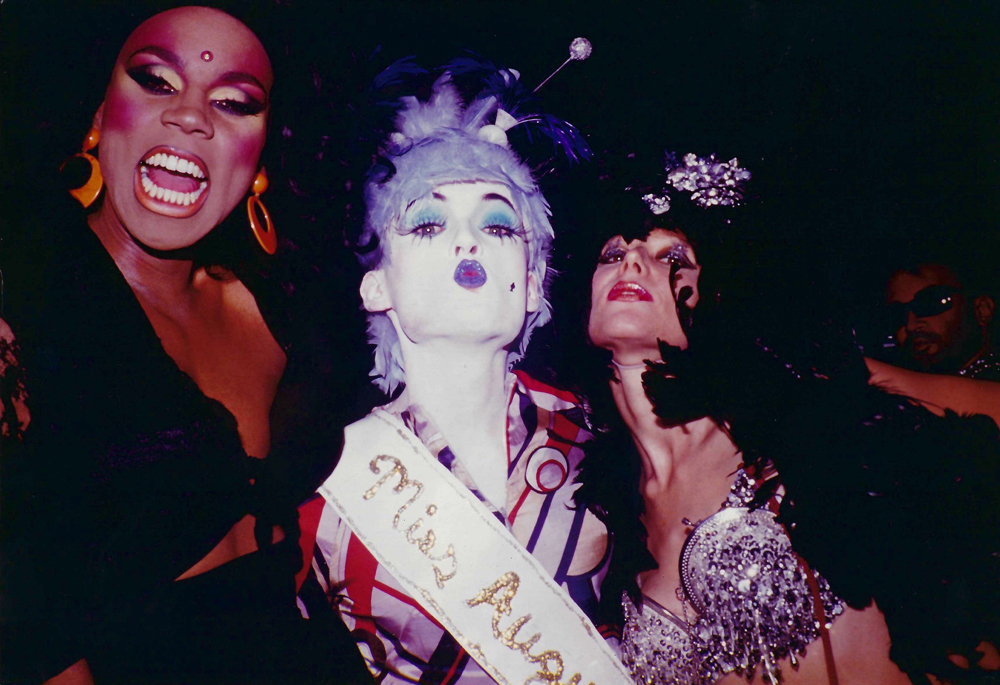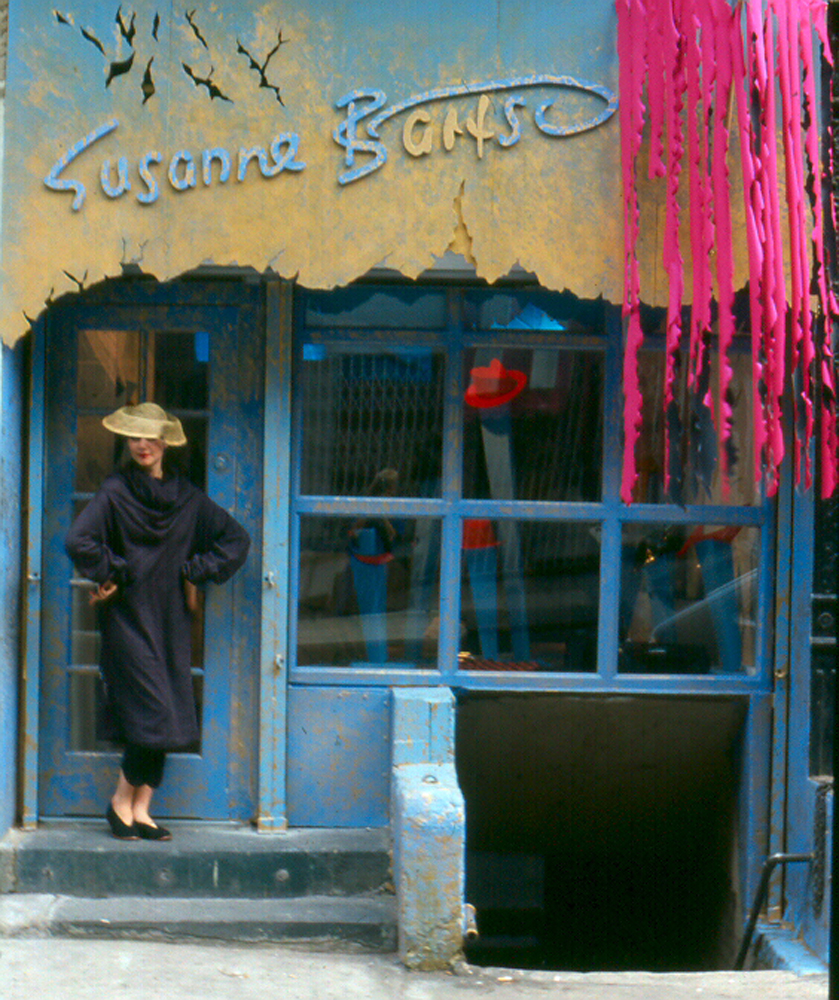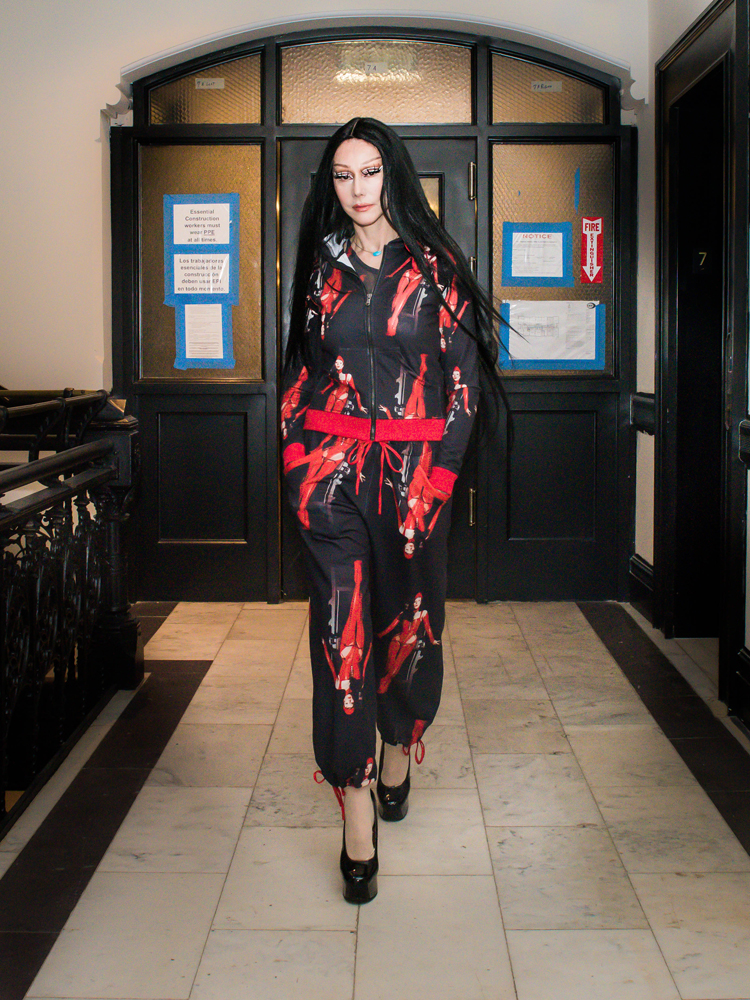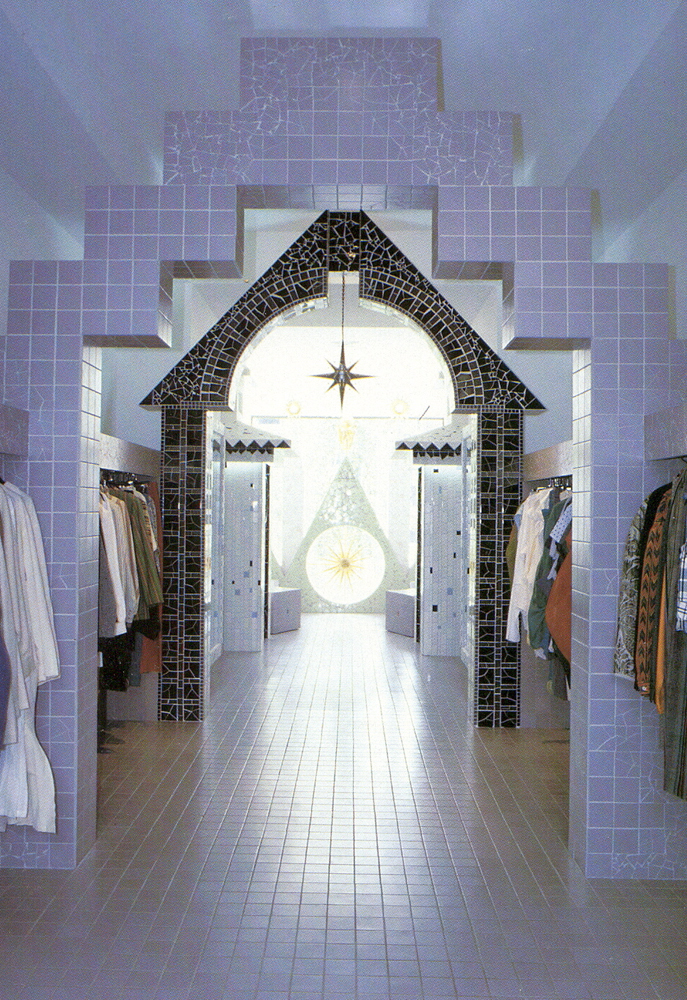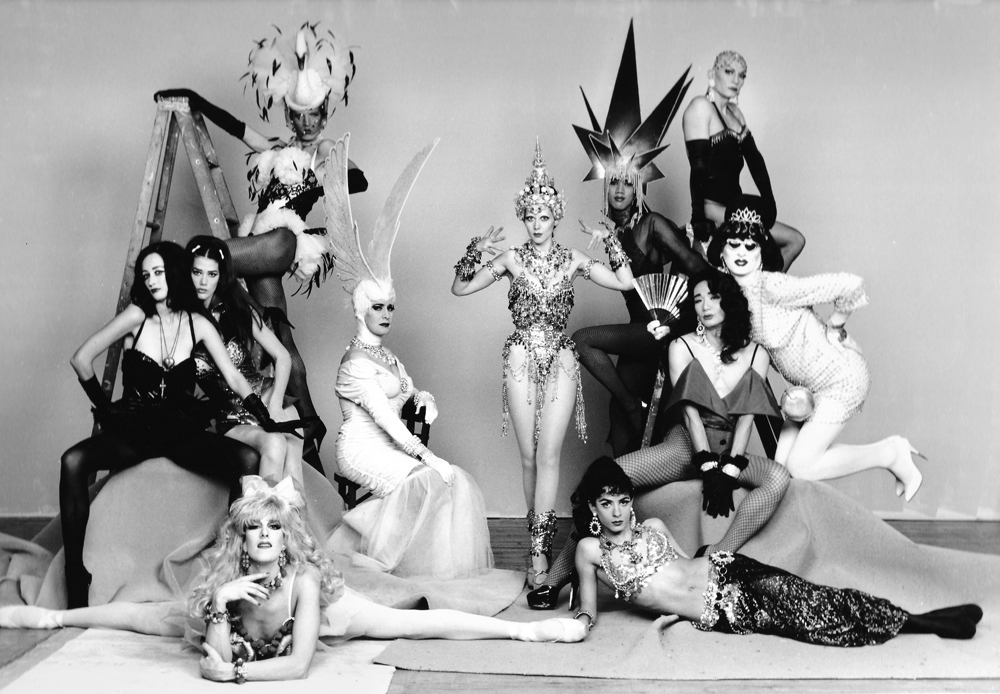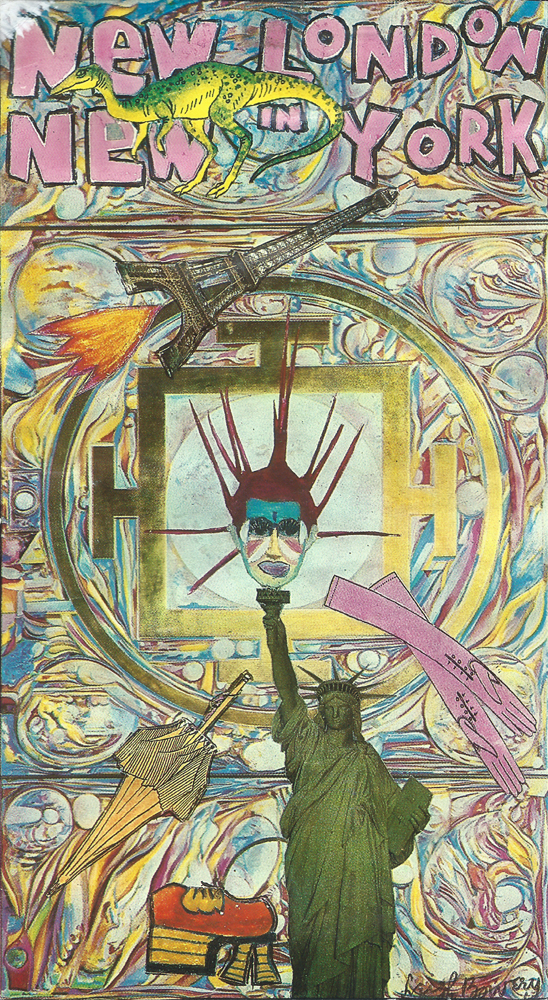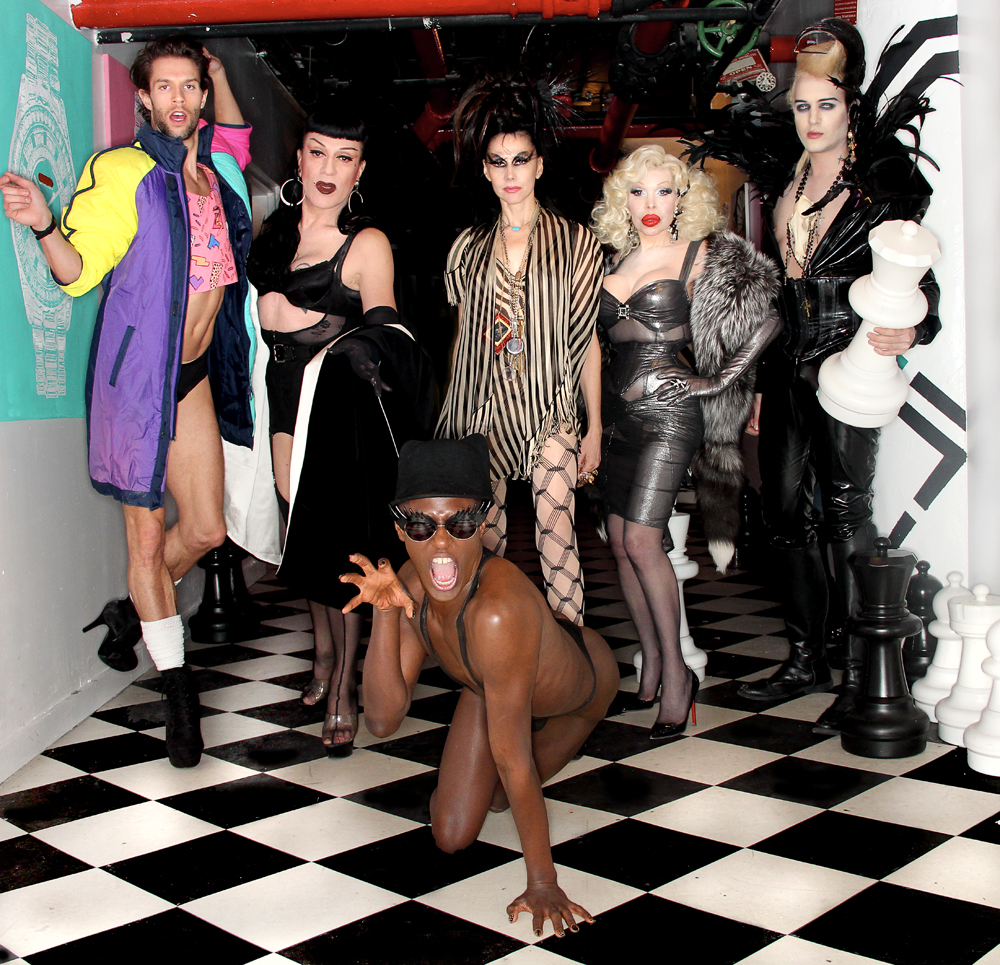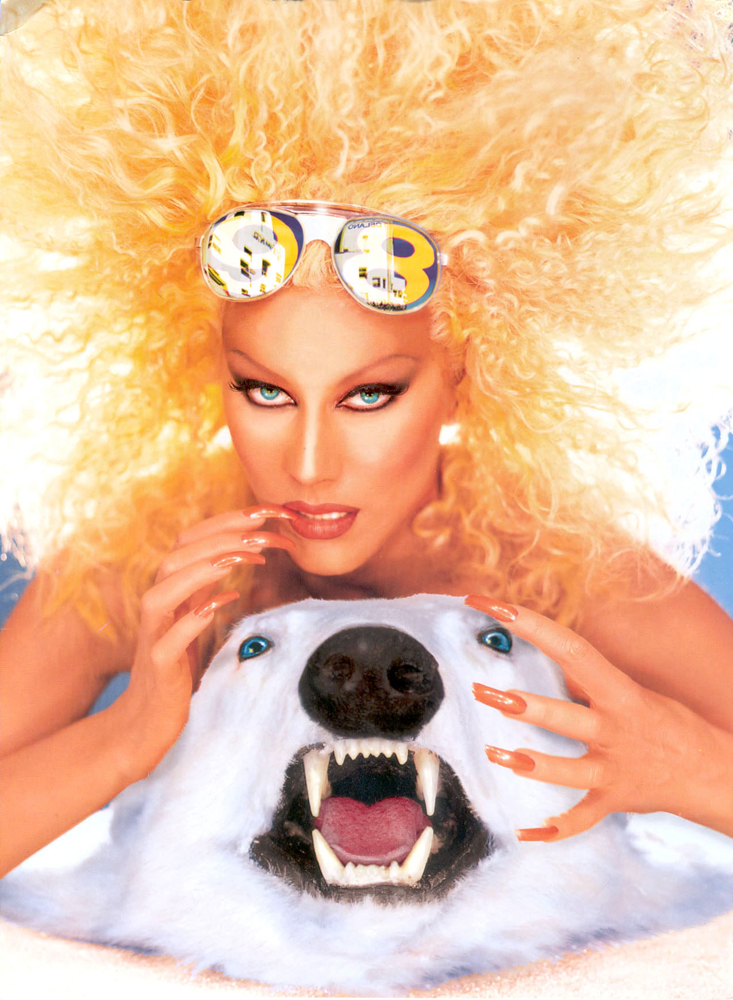Susanne Bartsch
Susanne Bartsch
Everyone’s Invited
Susanne Bartsch’s work defies categorisation, and that’s precisely the point. For four decades, she has served as a cultural synthesiser, continually blurring lines, operating in the arenas of fashion, art, music, beauty and design without adhering to any one of them. Rather, Bartsch’s oeuvre is the in-between. Frequently dubbed “The Queen of the Night”, she follows in the tradition of Gertrude Stein’s salons and Andy Warhol’s Factory: her events are laboratories for self-expression and a lode of artistic inspiration, influencing countless designers and launching the careers of the likes of RuPaul and Leigh Bowery. Perhaps most impressively, Bartsch is her own gesamtkunstwerk – her ever-changing appearance is one ongoing, multi-disciplinary work of art, from curlicued lash to corseted bodysuit, lacquered wig to high heel.
Leaving her native Switzerland as a teen, Bartsch landed in London at the tail end of the Swinging Sixties and fell in with the city’s new guard of musicians and designers. She sold velvet pants to David Bowie, knitted sweaters for Jimmy Page and became a key member of the New Romantic movement, known for adopting a new look each week. In 1981, she arrived in New York and, finding it void of London’s daring sartorial statements, opened a boutique stocking the underground designers she loved and knew personally. Bartsch’s irreverent approach saw her become a mascot for British fashion, bringing then-unknowns such as John Galliano and Vivienne Westwood to the global stage.
After succeeding in getting New Yorkers to dress up, Bartsch realised they needed somewhere to go. She organised her first party in 1985, discovering a medium that combined her eye for striking visuals with a talent for uniting people. The decadent disco scene of the ‘70s had fizzled, and Bartsch stepped in to inject New York nightlife with a hefty dose of effervescence. Unlike predecessors such as Studio 54, which prided itself on exclusivity, her events dissolved rigid social hierarchies. Celebrity, wealth and status were irrelevant – the only currency that counted was style.
Attracting a wide swathe of society, from punk rockers to jet-set elites, Bartsch’s parties offer a rare opportunity for seemingly disparate social groups to come together, finding common ground beneath the disco ball. Especially resonant today, when the internet and social media silo like-minded people into virtual bubbles, Bartsch bucks algorithmic logic, creating a space for individuals of all stripes to share in uninhibited revelry. Her embrace of misfits from the fringes – of society, of art, of all codified cultures – has made her an icon of otherness, particularly among the LGBTQ+ community. A pied piper for self-expression in all its many guises, she encourages guests to come as their most fabulous selves – whatever that may be. As one friend put it to the New Yorker, “She is Mother Teresa in a glitter G-string.”
The term “party” seems a reductive descriptor for Bartsch’s productions. Her happenings, which have evolved with the zeitgeist, are installed with a gallery of elaborately dressed creatures and a motley crew of performers, from opera-singing pole dancers to spoken word poets. More than merely a setting for drinking and dancing, these events are a breeding ground and springboard for subcultural movements. Their premise may be a party but, more often than not, they are a showcase for aesthetic experimentation. And given the ease with which Bartsch moves between the underground and the establishment, styles that debut on her dancefloors frequently turn up on runways, in music videos and the mainstream.
A prime example of this is the Love Ball, a fundraiser she mounted in 1989 at the dawn of the AIDS crisis and the first to unify the fashion industry in the fight against the disease. It took the form of a drag ball1 : she paired houses2 from Harlem’s ballroom community with corporate sponsors and introduced an audience including the likes of Madonna, Keith Haring and David Byrne to the rich voguing3 scene – resulting in Madonna’s Vogue and the documentary Paris is Burning. Moreover, with several iterations, the Love Ball raised over $2.5 million for those affected by HIV/AIDS.
As hostess and architect of these events, Bartsch sets the bar with her own ensembles. Drawing on references as far-ranging as Rossetti paintings and Masai tribal crafts, she uses clothing, hair and makeup to transform herself into a different character for each outing. She collaborates with little-known designers like BCALLA and stalwarts like Balenciaga, touching at all points along the style spectrum. Far more nuanced than a trifling costume, her deeply layered looks – like Bartsch herself – are amalgams that resist fitting into a neat little box.
Kareem Rashed
1. An event with its roots in the African-American LGBTQ+ community where attendees dance and model in numerous drag categories, competing for trophies awarded to the best look.
2. A chosen family of performers who compete as a team in drag balls, such as the House of Xtravaganza and the House of LaBeija.
3. Voguing is a dance style that originated in the Harlem ballroom community, characterised by striking a series of poses.
This text will also be printed in the publication Swiss Grand Award for Design 2022 (Scheidegger und Spiess), which will be published in June 2022 as part of the Swiss Design Awards exhibition in Basel. The publication includes a comprehensive interview with Susanne Bartsch and Kareem Rashed as well as a picture series on the award winner's work.
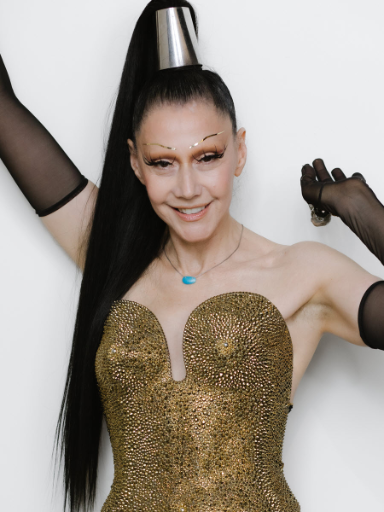
Jurystatement
«Susanne Bartsch’s legendary looks and parties have made her a dazzling total work of art. As an impresaria, artists’ agent and generous, open host, she operates with consummate flair at the intersection of fashion, make-up, activism, art, music and performance. She is the muse of numerous fashion designers and a pioneer and ambassador of expressive self-realisation. As such, she is a hugely influential style icon. An early campaigner for the rights of the LGBTQI community and recognition for people with HIV/Aids, she is regarded in New York as an unofficial patron saint of transformation and integration.»


